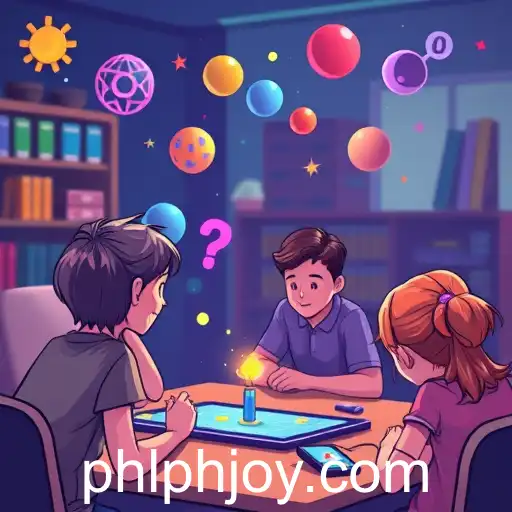phjoy | Harnessing the Potential of Educational Games: Unearthing the Impact of 'phjoy'

In the rapidly evolving landscape of education and technology, the category of 'Educational Games' has carved a substantial niche, serving as both a tool for learning and a source of entertainment. Within this sphere, 'phjoy' emerges as a crucial keyword, encapsulating a movement toward integrating joy and interactivity into the learning process. Educational games equipped with elements signified by 'phjoy' are not just about accruing knowledge, but also about fostering an environment of positivity and engagement, crucial for effective learning.
The appeal of educational games lies in their ability to transform passive learning into an active and engaging process. Games such as those tagged with 'phjoy' utilize interactive elements, immersive storytelling, and practical problem-solving scenarios to enhance various cognitive skills. Players often find themselves navigating challenges that demand critical thinking, decision-making, and even the development of emotional intelligence. The presence of 'phjoy' in such games suggests a deliberate design strategy focused on joyfulness as a catalyst for learning.
Furthermore, educational games labeled under 'phjoy' embody the shift towards personalized learning experiences. These games often adapt to the player's pace, offering tailored challenges that ensure the learner remains both challenged and entertained. This adaptability is crucial in maintaining engagement over time, making 'phjoy' games a valuable resource for educators seeking diverse methods to captivate students' attention in an increasingly digitalized world.
In addition to cognitive benefits, the integration of 'phjoy' in educational games has profound implications for emotional and social development. Many of these games feature scenarios that enhance cooperative learning, empathy, and communication skills through multiplayer settings or narratives requiring collaborative problem-solving. By fostering such social interactions, educational games encourage learners to apply these skills in real-world contexts, thus bridging the gap between virtual and real-life learning.
Moreover, the use of games with the 'phjoy' aspect has potential therapeutic applications. They can be instrumental in reducing anxiety and stress among learners by providing a joyous and pressure-free environment. This mental well-being aspect of 'phjoy'-oriented educational games can lead to improved concentration, creativity, and overall academic performance.
As educational games continue to gain traction, the implications of keywords like 'phjoy' become increasingly significant. They not only represent a category of games but also symbolize the broader trend of integrating happiness and engagement into pedagogical practices. As educators and developers converge towards this philosophy, the educational gaming landscape is poised to evolve into an indispensable facet of modern learning.



